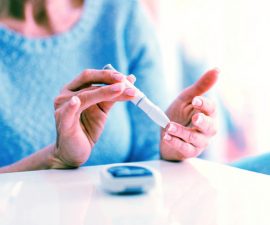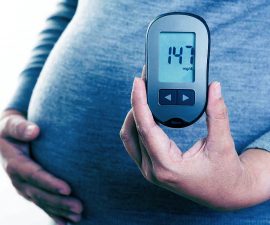… Continued …
Frequent urination
In 5-year old children with juvenile diabetes, the inability of the body in controlling high blood sugar makes the kidneys work harder.
The kidneys are responsible to maintain healthy-balanced, normal blood. They play a key role on what to keep and what to remove from circulation (bloodstream). If there are high amounts of glucose in the circulation (when insulin fails to control it), the kidneys will filter it and remove through urine. As a result, you are likely to pass more urine (frequent urination).
Poorly-controlled high blood sugar is dangerous for the kidney function. Over time, it may cause kidney damage. In fact, kidney disease is one of common serious diabetic complications.
Increased thirst
Frequent urination makes the body lose lots of fluid. As a result the brain activates the thirst center to drink more water. For in-depth information of how high blood sugar can make diabetics get so thirsty, see this previous post!
Intense hunger
Even though if your child has eaten enough, he/she may still have extreme hunger! This is because the glucose – the main fuel for energy – cannot be absorbed by cells of the body if there is no adequate insulin in the circulation.
Fatigue and lack of energy
You need to have adequate supply of energy to support your daily activities. As noted before, the main fuel of your energy is metabolized from glucose. Without enough insulin, glucose cannot be converted to become energy in the cells of the body. As a result, the body’s muscles and organs suffer for lack of energy and you have debilitating fatigue!
Change in behavior (irritability)
Juvenile diabetes may also affect children psychologically. For instance, change in behavior such as moody or irritability is quite common in people with the condition.
Unintended weight loss
Children with juvenile diabetes may fail to gain weight normally, even though they have a good appetite or even an increased appetite. This weight loss problem is also associated with the failure of the body in using and converting glucose for energy. To compensate with the problem and provide fuel to the hungry body’s cells, the body breaks down stored fat and muscle.
Other symptoms
- Girls with this disease may experience a genital yeast infection. In babies, the yeast infection usually causes diaper rash.
- High blood sugar may also cause blurred vision, because more fluids are pulled from the eye’s lenses. This can interfere with the ability of patient to focus clearly.
Is there anything you can do to prevent the disease?
Currently, there is no cure for juvenile diabetes. And the bad news, it’s also unpreventable. There is no known way to prevent it!
Test is available to help identify the abnormality of antibodies associated with this disease. It can be done in a child with some risk factors of the disease or who has a high risk of developing the disease. But the presence of these antibodies doesn’t mean that that child will definitely develop the disease – and again, there is also no known way to prevent the disease. This test is usually used in clinical trials.
Although there is still nothing you could have done to prevent the disease, but diabetes care and treatment have improved significantly. Many patients are now able to live long with it – read more the prognosis and outlook of the disease in here!
- http://www.mayoclinic.org/diseases-conditions/type-1-diabetes-in-children/basics/symptoms/con-20029197
- http://www.diabetes.org/diabetes-basics/type-1/




